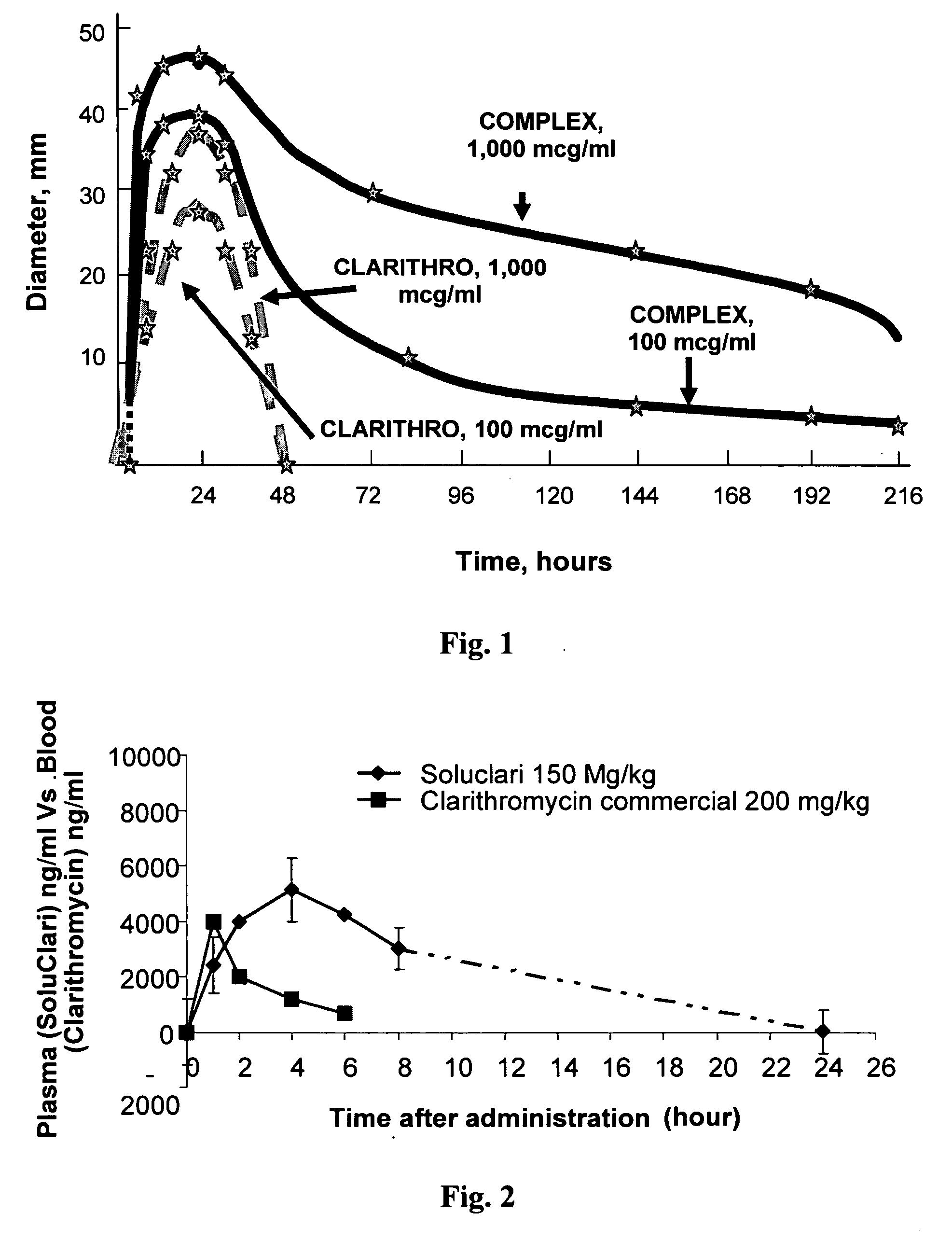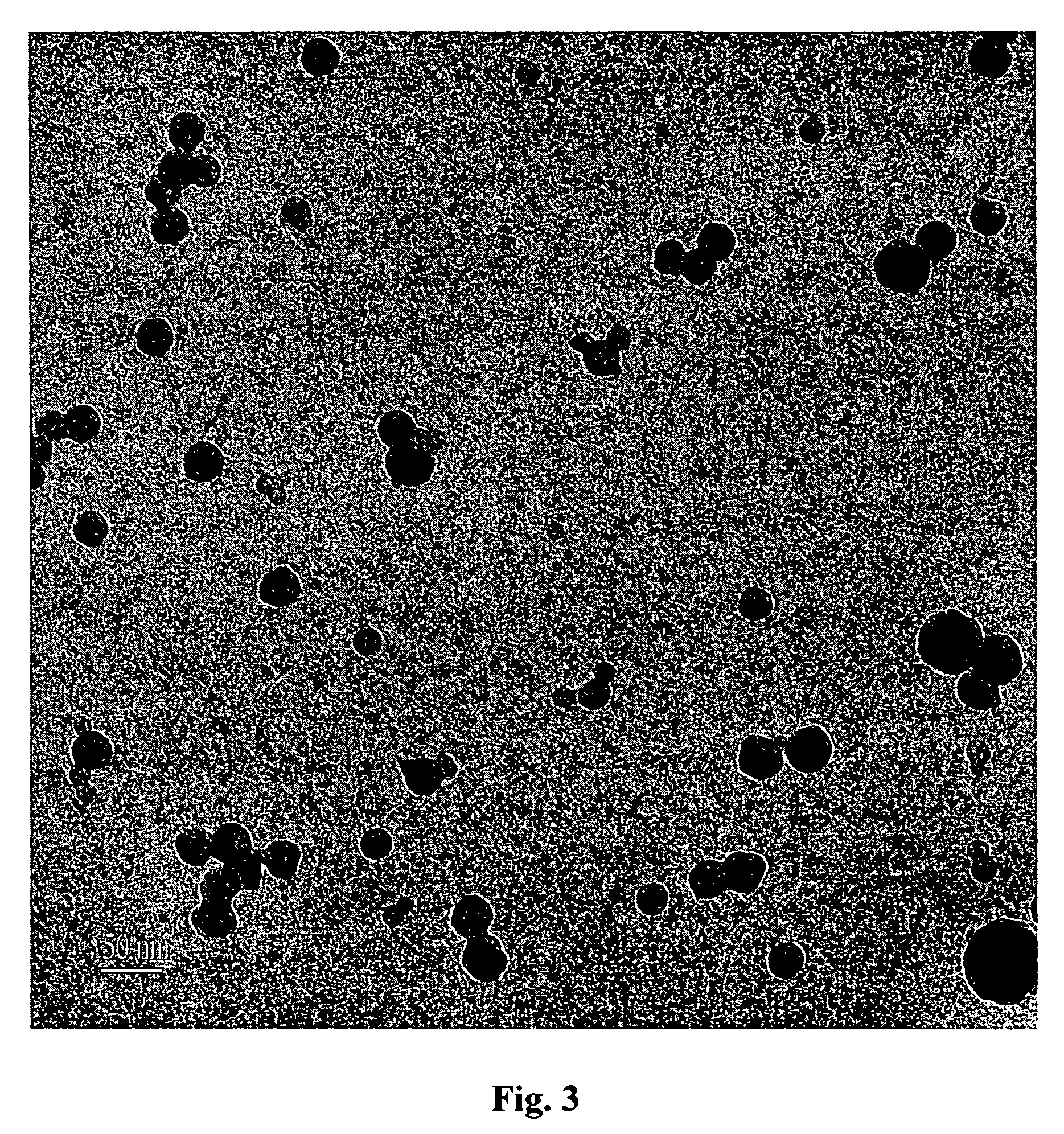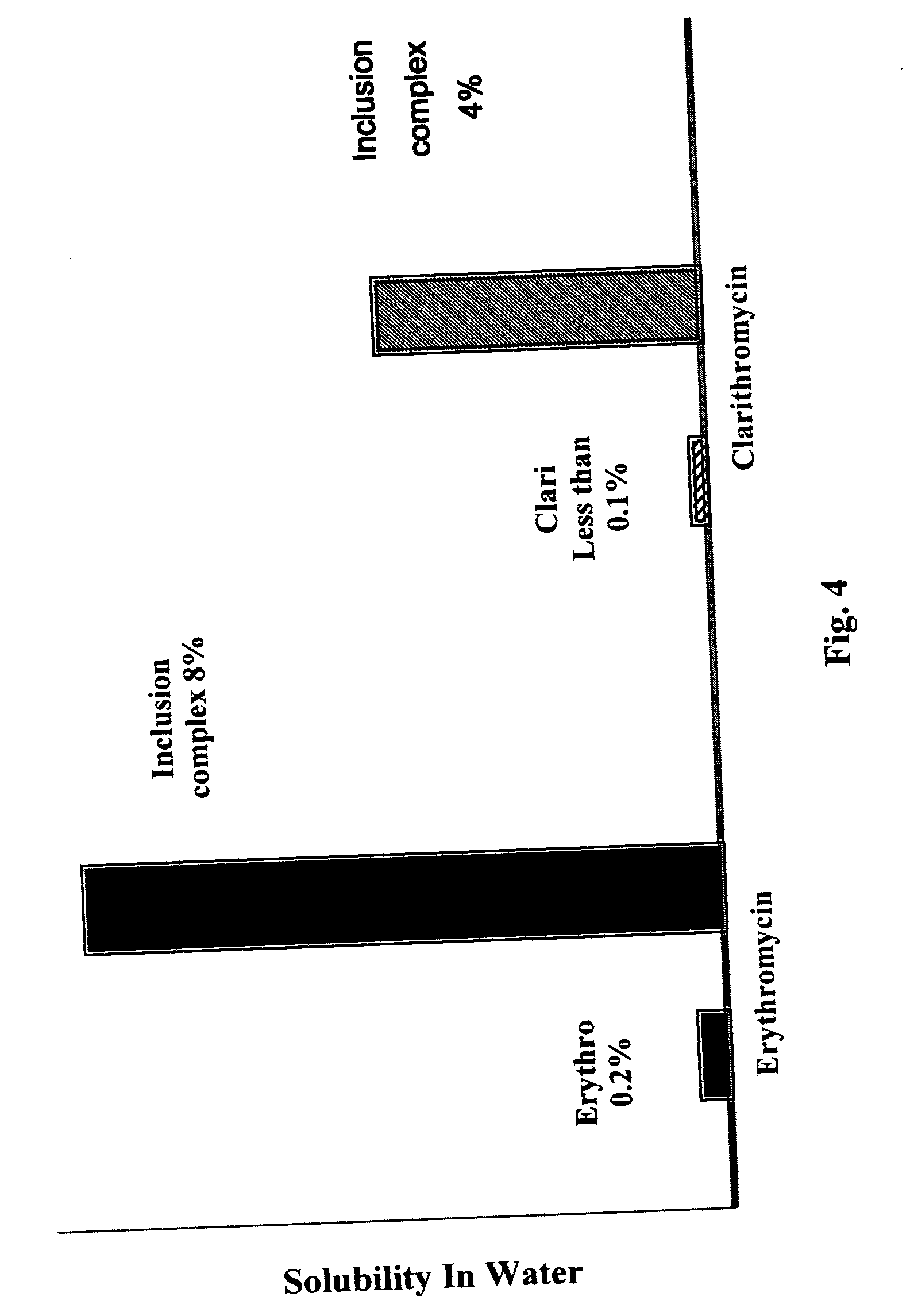Water soluble nanoparticles and method for their production
a technology of nanoparticles and nanoparticles, applied in the field of nanoparticles, can solve the problems of hindering the development of therapeutic agents, each of the existing companies focusing on these large and small molecules has its own restriction and limitations, and the solubility of water, so as to achieve the effect of readily bioavailable in the human body
- Summary
- Abstract
- Description
- Claims
- Application Information
AI Technical Summary
Benefits of technology
Problems solved by technology
Method used
Image
Examples
example 1
General Procedure for Production of the Mano-Particles Comprising Inclusion Complexes
[0130] For the preparation of the nano-particles of the invention, the following general procedure is carried out: [0131] (i) preparation of a molecular solution of the amphiphilic polymer in water; [0132] (ii) preparation of a molecular solution of the active compound in an organic solvent; [0133] (iii) dripping the cold solution of the active compound (ii) into the polymer solution (i) heated at a temperature 5-10° C. above the boiling point of the organic solvent of (ii), under constant mixing; and [0134] (iv) evaporation of the organic solvent thus obtaining the desired nano-dispersion of nano-particles comprising the inclusion complexes of the active compound entrapped within the amphiphilic polymer.
example 2
Preparation of Modified Starch
[0135] For use in the invention, it is desirable to use starch with a large proportion of linear chains, i.e. starch with high contents of amylose, the constituent of starch in which anhydroglucose units are linked by a-D-1,4 glucosidic bonds to form linear chains, and low contents of amylopectin, a constituent of starch having a polymeric, branched structure. The levels of amylose and amylopectin and their molecular weight vary between different starch types.
[0136] To improve its characteristics for use in the invention, starch, e.g. corn or potato starch, can be modified, for example by increasing its hydrophilicity by acid hydrolysis and / or by reaction with an agent, e.g. polyethylene glycol (PEG) and or hydrogen peroxide. In addition, starch can be subjected to thermal treatment, for example at 160-180° C., for about 30-60 min, to reduce the amount of branching (hereinafter designated “thermodestructed starch”).
[0137] For modification, varying am...
example 3
Preparation of Nano-Particles Comprising Inclusion Complexes of clarithromycin Wrapped in Modified Starch
[0139] For the preparation of the amphiphilic polymer, potato starch of molecular mass (5−10)×104 was dissolved in distilled water, initially heated at 160-180° C., and modified by PEG-400 as described in Example 2, using starch: PEG-400 ratio ranges between 2:1 and 4:1, solution pH (6.5 or below) adjusted with citric acid, temperature 160-180° C., and time of modification 60-180 min. A solution of clarithromycin in methyl acetate or dichloromethane was prepared.
[0140] The aqueous solution of the modified starch was put in a reaction vessel and heated up to 60° C. while mixing with a homogenizer at speed of 10,000 and up rev / min. After the temperature of the starch solution reached 60° C., the clarithromycin solution was added thereto at a rate of about 1 ml / sec. The homogenizer speed was also at least 10,000 rev / min. Clarithromycin interacted with the modified starch to create...
PUM
| Property | Measurement | Unit |
|---|---|---|
| temperature | aaaaa | aaaaa |
| diameter | aaaaa | aaaaa |
| sizes | aaaaa | aaaaa |
Abstract
Description
Claims
Application Information
 Login to View More
Login to View More - R&D
- Intellectual Property
- Life Sciences
- Materials
- Tech Scout
- Unparalleled Data Quality
- Higher Quality Content
- 60% Fewer Hallucinations
Browse by: Latest US Patents, China's latest patents, Technical Efficacy Thesaurus, Application Domain, Technology Topic, Popular Technical Reports.
© 2025 PatSnap. All rights reserved.Legal|Privacy policy|Modern Slavery Act Transparency Statement|Sitemap|About US| Contact US: help@patsnap.com



